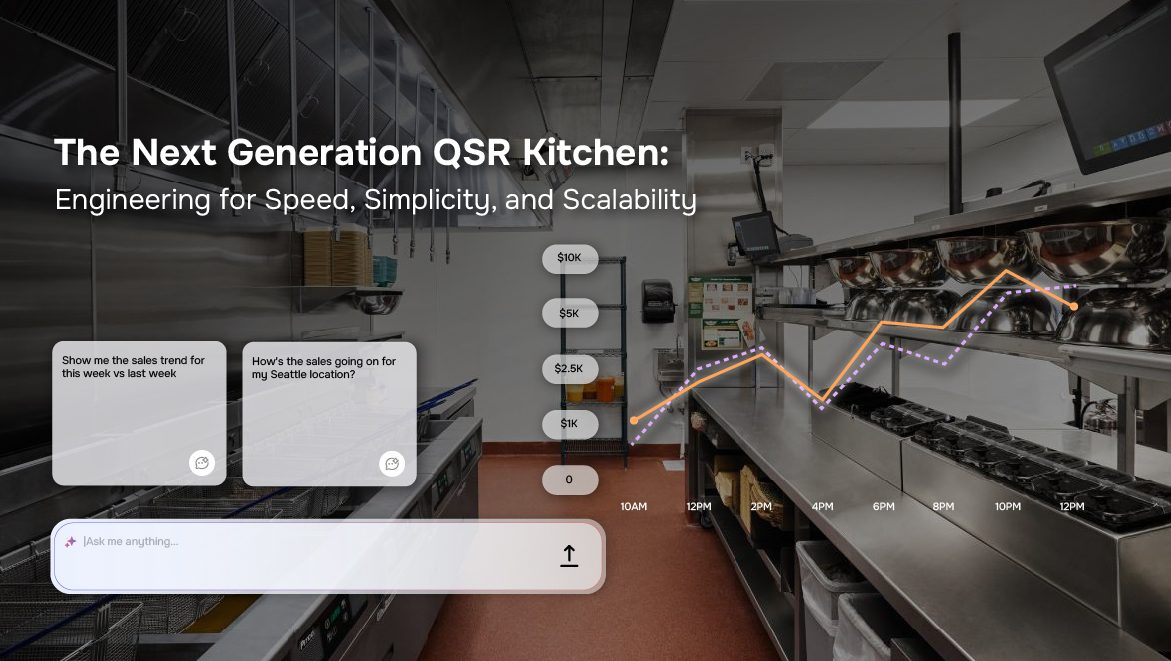
The Smart Kitchen: The Foundation for Automation in QSRs
With more than three decades of leading innovation and operations at McDonald’s and Steak ‘n Shake, I’ve seen firsthand how technology reshapes the restaurant industry. From re-engineering kitchen systems to introducing new operational workflows, the mission has always been the same: leverage technology to elevate human performance, not replace it. What’s different now is the speed of change. Innovation cycles that once took three to five years can now happen in just a few months. As AI, robotics, and automation rapidly advance, the question for restaurant leaders is no longer if transformation is coming, but whether their infrastructure is ready for it.
You can’t automate chaos. And yet, many operators are layering new innovations onto fragmented, outdated platforms: creating costly complexity and stalled progress. Too often, legacy systems are stitched together with API workarounds and manual integrations. The result? Every new update becomes a project, every pilot becomes painful, and scaling becomes nearly impossible.
Consolidate the Tech Stack Before Adding More Tech
A future-ready kitchen requires consolidation: a modern, unified platform that supports real-time communication between equipment, software, and the humans operating both. Without it, every new deployment becomes another integration headache. Consolidation enhances speed, lowers long-term costs, and positions brands to adopt new capabilities without extensive rework.
Choose Platforms Engineered for AI: Not Bolted to It
Legacy systems treat AI like an optional add-on, limiting impact and inflating cost. Operators should instead prefer platforms designed from day one to convert data into predictive insights and automated actions. When systems are AI-native, not AI-patched: visibility becomes velocity. Teams can prevent problems, not chase them.
Partner with Leaders Who Understand Ops + Tech Reality
Deploying automation in a live kitchen is not a research project; it’s operational change. Success requires people who know:
- guest expectations
- service rhythms
- menu complexity
- labor and training dynamics
Expert partners align automation with real-world execution: ensuring the technology works where it matters most, during the lunch rush.
Redesign User Experience for the Roles of the Future
As automation grows, job responsibilities evolve. Staff members will increasingly oversee systems rather than execute every task manually. Interfaces must be intuitive, reduce training time, and minimize cognitive load. Clean UX becomes the difference between smooth automation and operational friction.
Unify Operational Intelligence: Front to Back
The next generation of restaurant operations will run on a single brain, where front-of-house signals can automatically influence back-of-house execution. Drive-thru demand triggers fryer prep. Inventory signals trigger proactive ordering. Maintenance signals trigger automated alerts.
When data flows freely, employees shift from task performers to problem solvers, guiding automation, and elevating guest experience.
A New Framework for QSR Leaders
If robots arrive tomorrow, could your systems support them?
If the answer is anything but yes, it’s time to strengthen the foundation. The restaurants leading this transformation aren’t simply adopting new technology; they’re designing for continuous innovation.
Because in the smart kitchen era:
Technology isn’t replacing people: it’s empowering them.
And the brands that understand this faster will shape the future of QSR.






